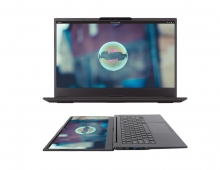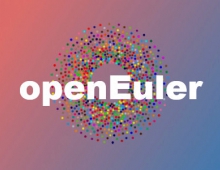
Linux set to break through in consumer electronics
Linux is set to be the software of choice for future televisions, set top boxes and DVD recorders, consumer electronics executives and specialists said Thursday.
Linux, currently a software system mostly used to power big servers and personal computers, is also now emerging as a small set of computing code to drive devices like mobile phones, remote controls and TVs.
"The consumer electronics industry has chosen the Linux platform in large numbers. For us, Linux has several advantages," said Gerard Kleisterlee, Chief Executive at Philips Electronics, Europe's biggest and the world's No. 3 consumer electronics maker.
Low cost and the freedom to tweak the software are reasons why eight of the world's largest consumer electronics makers, including the numbers one and two Sony Corp and Matsushita of Japan, have set up an alliance to develop and promote Linux for consumer electronics products, last month.
Linux should also create a common standard to connect products from different manufacturers which currently build various proprietary systems into their devices.
At the sector's largest trade fair IFA in Berlin, the first Linux products are already on show and more will come soon, companies said.
Linux's key advantage over other operating systems is that the core software is freely available and widely embraced. In the cut-throat electronics business where profit margins are one or two percent at the best of times, every saving is welcome.
Linux's core software, also known as kernel, which drives the chips and other basic functions of a device, can be as small as one Megabyte if embedded in a consumer electronics product, Fink added. A single high quality digital picture or one minute of MP3 music can be stored on one Megabyte of memory.
U.S. electronics maker Motorola has launched a Linux mobile phone for the Chinese market, while Philips has a remote control running on Linux for all the electronic devices in a home.
The Consumer Electronics Linux Forum (CELF) is working to speed up the start-up time of devices and reduce power demands.
Next target is the 164 million units a year global television set market, as well as the millions of set top boxes and DVD recorders. These devices need more powerful chips and versatile software like Linux to connect easily to other devices in the home and the Web. U.S.-based Microsoft has a slimmed-down version of Windows for networked home electronics.
Consumers are embracing home networks to hook up their computers with always-on, fast Internet. Consumer electronics makers believe that next they will want to play and display music, pictures and films from the Internet and their PC on TVs and HiFi sets, which is why they make them more powerful.
Worldwide, over twenty million consumers have a home network this year, a number that will double within two years and treble within four, said Juergen Thiel, a Western European sales manager at U.S. chip maker Intel. Intel said it would partner with Sony to develop these home networks.
Sony, Philips and Samsung Electronics from South Korea all showed home network boxes that will transfer digital content from PCs and the Web to consumer electronics devices.
While some of the earlier boxes still run on proprietary embedded software, future generations that are expected to sell in the millions will use Linux, Philips said.
"The consumer electronics industry has chosen the Linux platform in large numbers. For us, Linux has several advantages," said Gerard Kleisterlee, Chief Executive at Philips Electronics, Europe's biggest and the world's No. 3 consumer electronics maker.
Low cost and the freedom to tweak the software are reasons why eight of the world's largest consumer electronics makers, including the numbers one and two Sony Corp and Matsushita of Japan, have set up an alliance to develop and promote Linux for consumer electronics products, last month.
Linux should also create a common standard to connect products from different manufacturers which currently build various proprietary systems into their devices.
At the sector's largest trade fair IFA in Berlin, the first Linux products are already on show and more will come soon, companies said.
Linux's key advantage over other operating systems is that the core software is freely available and widely embraced. In the cut-throat electronics business where profit margins are one or two percent at the best of times, every saving is welcome.
Linux's core software, also known as kernel, which drives the chips and other basic functions of a device, can be as small as one Megabyte if embedded in a consumer electronics product, Fink added. A single high quality digital picture or one minute of MP3 music can be stored on one Megabyte of memory.
U.S. electronics maker Motorola has launched a Linux mobile phone for the Chinese market, while Philips has a remote control running on Linux for all the electronic devices in a home.
The Consumer Electronics Linux Forum (CELF) is working to speed up the start-up time of devices and reduce power demands.
Next target is the 164 million units a year global television set market, as well as the millions of set top boxes and DVD recorders. These devices need more powerful chips and versatile software like Linux to connect easily to other devices in the home and the Web. U.S.-based Microsoft has a slimmed-down version of Windows for networked home electronics.
Consumers are embracing home networks to hook up their computers with always-on, fast Internet. Consumer electronics makers believe that next they will want to play and display music, pictures and films from the Internet and their PC on TVs and HiFi sets, which is why they make them more powerful.
Worldwide, over twenty million consumers have a home network this year, a number that will double within two years and treble within four, said Juergen Thiel, a Western European sales manager at U.S. chip maker Intel. Intel said it would partner with Sony to develop these home networks.
Sony, Philips and Samsung Electronics from South Korea all showed home network boxes that will transfer digital content from PCs and the Web to consumer electronics devices.
While some of the earlier boxes still run on proprietary embedded software, future generations that are expected to sell in the millions will use Linux, Philips said.





















